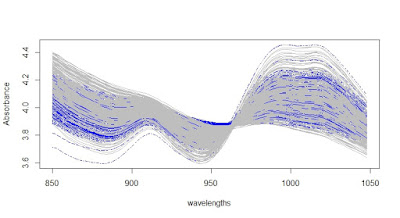One important point before develop a calibration is to know the
laboratory error. This error, known as SEL (Standard Error Laboratory).
This error change depending of
the product, because it can be very homogenous or heterogeneous, so in the
first case the lab error is lower than in the second case.
In the case of meat meal the
error are higher than for other products and this is a case where I am working
these days and I want to share in this posts.
A certain number of samples
(n) well homogenized had been divided into two or four subsamples and had been
send to a laboratory for the Dumas Protein analysis. After receive the results,
a formula used for this case, based on the standard deviation of the subsamples
and in the number of samples, gives the laboratory error for protein in meat
meal.
The result is 1,3 . Probably
some of you can think that this is a high value, but really, the meat meal
product is quite complex and I think is normal.
Every subsample that went to
the lab has been analyze in a NIR, and the spectra of the subsamples studied
apart with the statistic RMS that shows that the samples were well homogenized.
Now I have the option to
average the predictions of the NIR predictions (case 1), or to average the
spectra of the subsamples, predict it with the model and get the predicted
result (case 2). I use in this case the option 1 and plot a residual plot with
the residuals of the average predictions subtracted from the lab average value:
Blue line is +/- “ 1.SEL”,
yellow +/- “ 2.SEL” and red +/- “ 3.SEL”.




